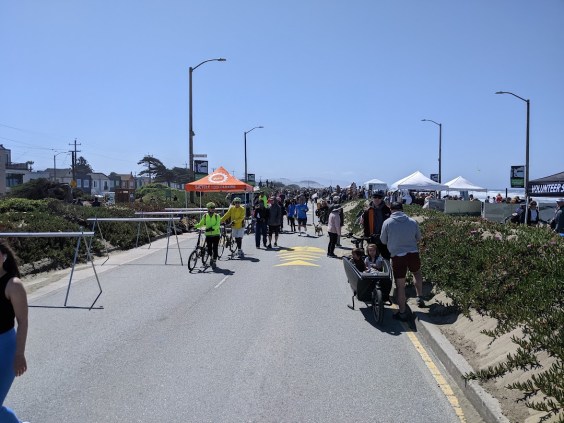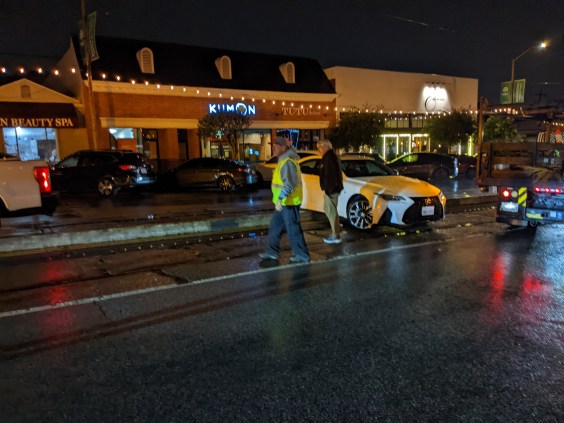
No, the Senate Environment and Public Works Committee's new six-year bill, obnoxiously named the DRIVE Act (Developing a Reliable and Innovative Vision for the Economy) [PDF], won't usher in a more enlightened era of federal transportation policy. But neither would it be a significant step backward. And with the realization setting in that further extensions of current law might be impossible, the DRIVE Act could actually become the nation's first long-term transportation authorization in a decade.
As Brad relayed in his post this morning, the “big takeaway” from the new bill, according to the League of American Bicyclists, is that it "is not a coherent vision of the future, or even of the present." True that.
Note that this bill does not include the transit title -- it's up to the Banking Committee to draft that.
What the bill does, mainly, is continue existing policies related to streets and highways -- meaning it's not the nightmare you might have expected under the chairmanship of climate denying Oklahoma Senator James Inhofe. When you look closely, the DRIVE Act actually makes some improvements at the margins. Here are a few examples:
Design Standards: The bill explicitly sanctions the use of the NACTO street design guide along with the old FHWA and AASHTO engineering manuals. The NACTO guide includes designs that are much more appropriate for city streets where people outside of cars need safe and reliable transportation option.
The bill also states that a local jurisdiction can use a different roadway design guide than its state DOT uses, if the locals are the project sponsor. Anything that makes it easier for cities to circumvent obstructionist DOTs is a good idea.
Complete Streets: A tiny word change from “may” to “shall” strengthens the directive for states and MPOs to design streets for all users, not just motorists, when doing road work.
Local Control: MAP-21 says local agencies, not state DOTs, get to spend half of each state’s Transportation Alternatives Program (TAP) funds, which support biking and walking projects, among others. The Bike League wanted that to be two-thirds. The DRIVE Act allocates all TAP funds to local jurisdictions -- with the caveat that the state can take away half of it at any time. So, not exactly a step forward in places with voracious state DOTs.
And, although it’s a bummer to see a six-year bill keep TAP funding at such low levels ($850 million a year), at least it side-stepped attacks like the House's DRIVE Act (that one stood for "Developing Roadway Infrastructure for a Vibrant Economy"), which sought to eliminate TAP altogether.
The DRIVE Act also increases the share of Surface Transportation Program funds that get allocated to local and regional agencies -- which tend to spend more wisely than state DOTs -- from 50 percent to 55 percent.
Transit-Oriented Development Eligible for TIFIA Loans: MAP-21 ballooned the TIFIA loan program from $122 million to $1 billion. This bill would trim it back down to $650 million and add eligibility for transit-oriented development projects. And though TIFIA is usually reserved for big projects costing $50 million and up, the threshold was lowered to $10 million for TOD projects.
So what happened the other $350 million from TIFIA? The committee put it into a new program called AMP (Assistance for Major Projects). AMP contains an indefensible provision that no more than 20 percent can go to multimodal projects. Because, of course, infrastructure for cars is clearly the answer 80 percent of the time.
Performance Measures: There’s actually nothing new here. I’m just including this category to call attention to the fact that while MAP-21 supposedly ushered in a new day of data-based accountability, the DRIVE Act barely breathes a word about performance measures except to offer some support to states that are struggling with data collection. A more robust follow-up to MAP-21’s dive into performance measurement could have made transportation policy more responsive to 21st century mobility needs instead of 20th century politics.
As James Corless of Transportation for America said in a statement this morning, “The next surface transportation authorization should improve transparency and accountability, and focus on how we pick transportation projects and measure the success of those investments.” While the bill has some minute gains for transportation, it doesn't come close to meeting that goal.





